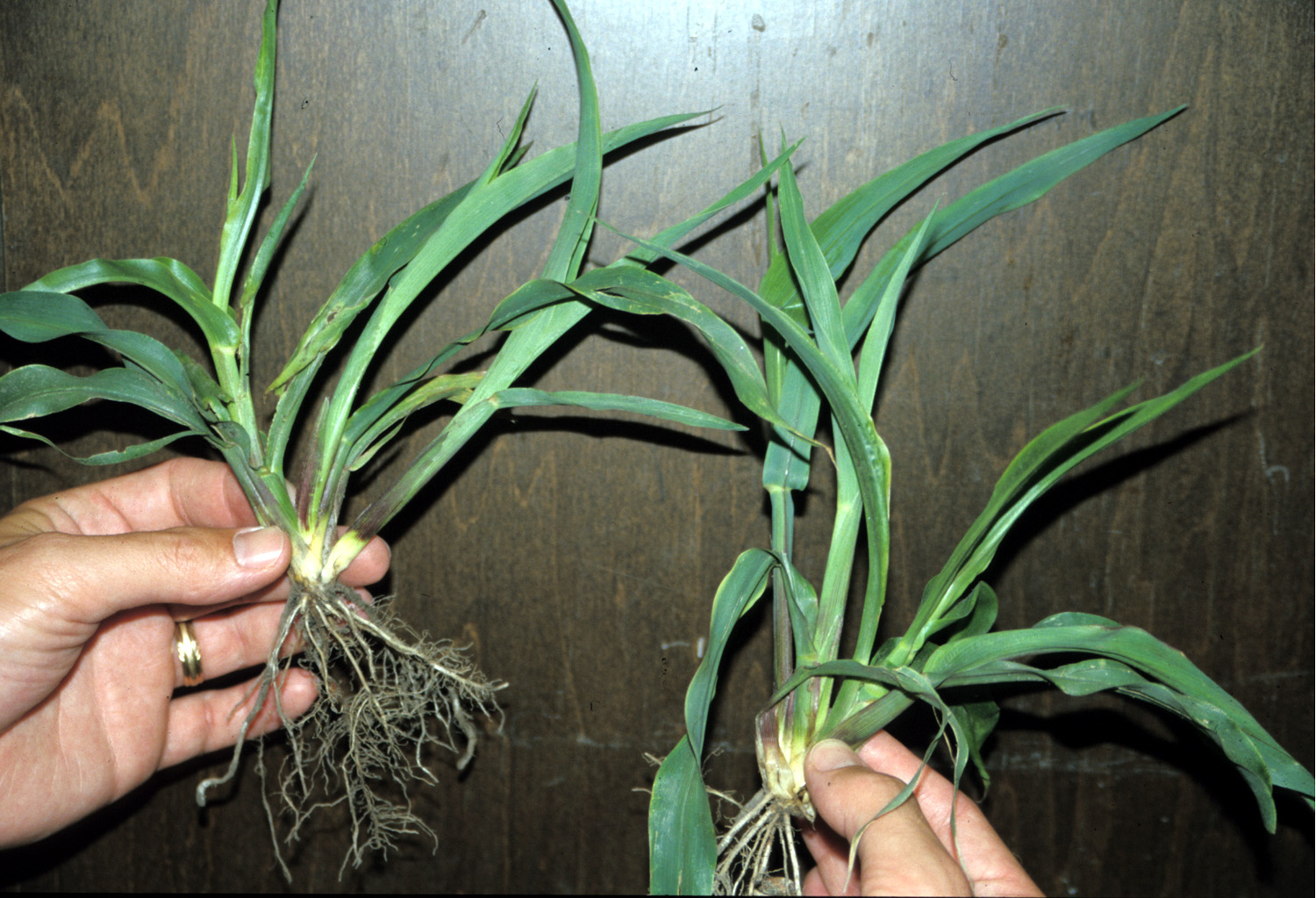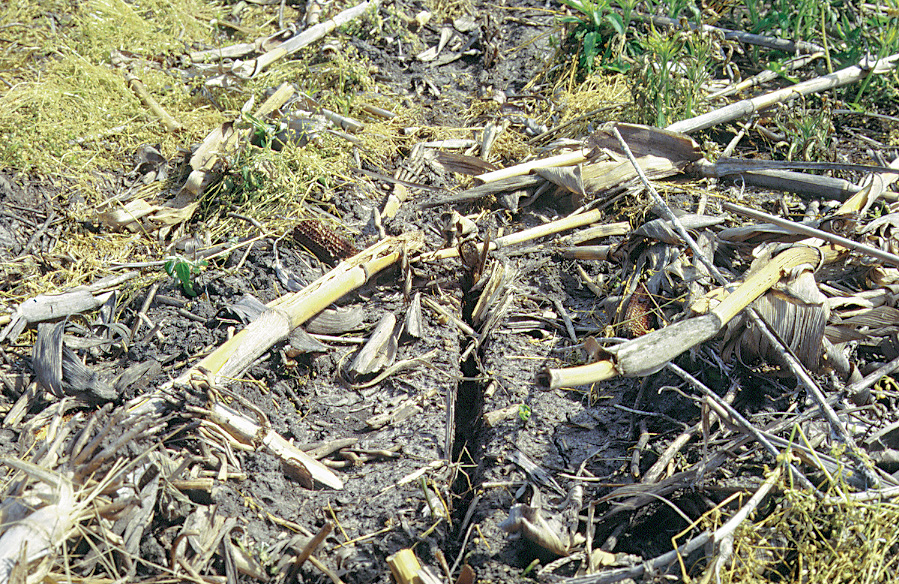Brown Stink Bugs (Corn)
Euschistus spp.
Search the Pest & Crop Newsletter
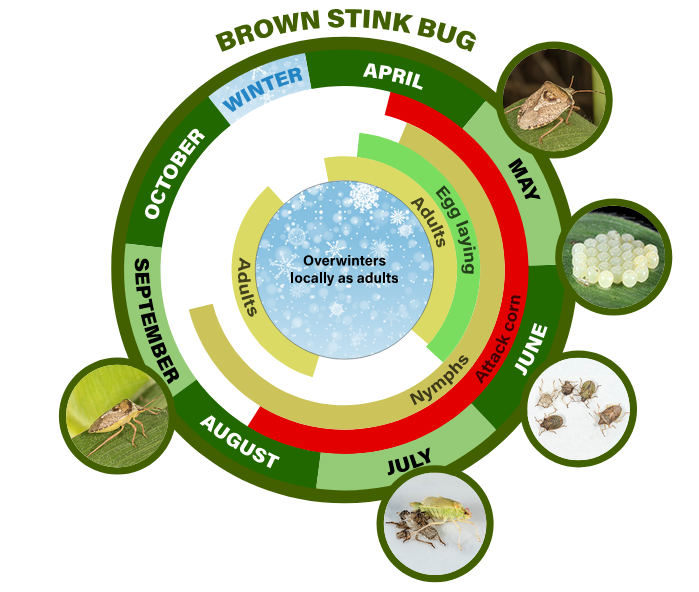
The ability to see these full-sized life-cycle images is currently disabled to resolve an issue.
Appearance and Life History
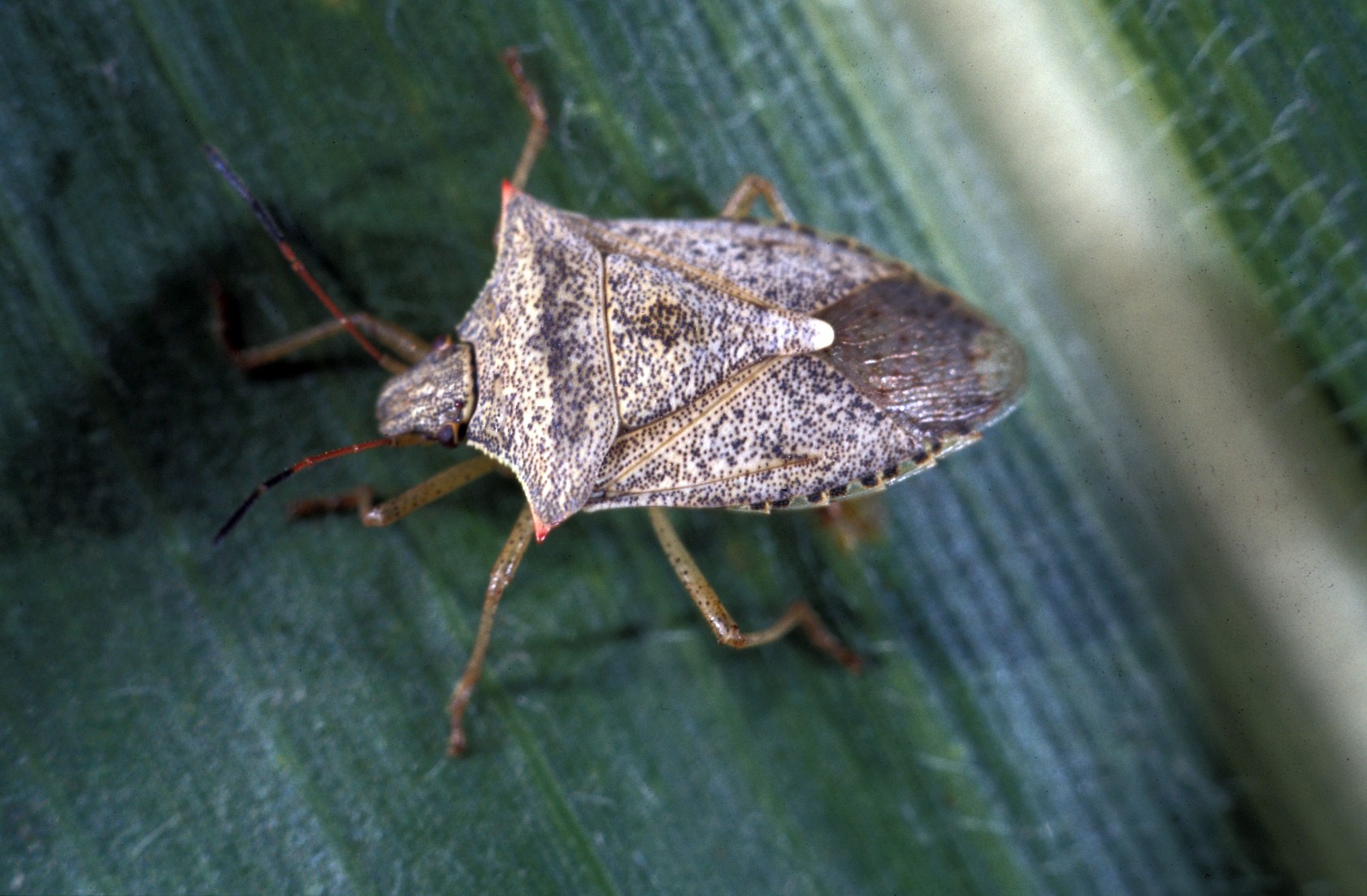
Photo by B. Christine
Stink bugs are pests of many crops worldwide. In the United States, plant feeding stink bugs are most often associated with soybean, tobacco, peaches, crucifers, tomatoes, small grains, cotton, and various weed species. Their occurrence in corn has been documented, however, little is known of their overall impact.
Of the several species of brown stink bugs that may attack corn, the species most often noted in Indiana is the one spotted stink bug, Euschistus variolarius. This stink bug is brown and approximately 7/16 inch (9 mm) in length when full grown. Adults are broad, somewhat flat, and shield-shaped. The area immediately behind the head, the pronotum, is sharply pointed at the sides and often orange-tipped. The underside of the body is pale green to yellowish. Males of this species have a distinct dark spot near the tip of the underside of the abdomen. Other species of brown stink bugs, such as Euschistus servus and Euschistus euschistoides, are similar in appearance.
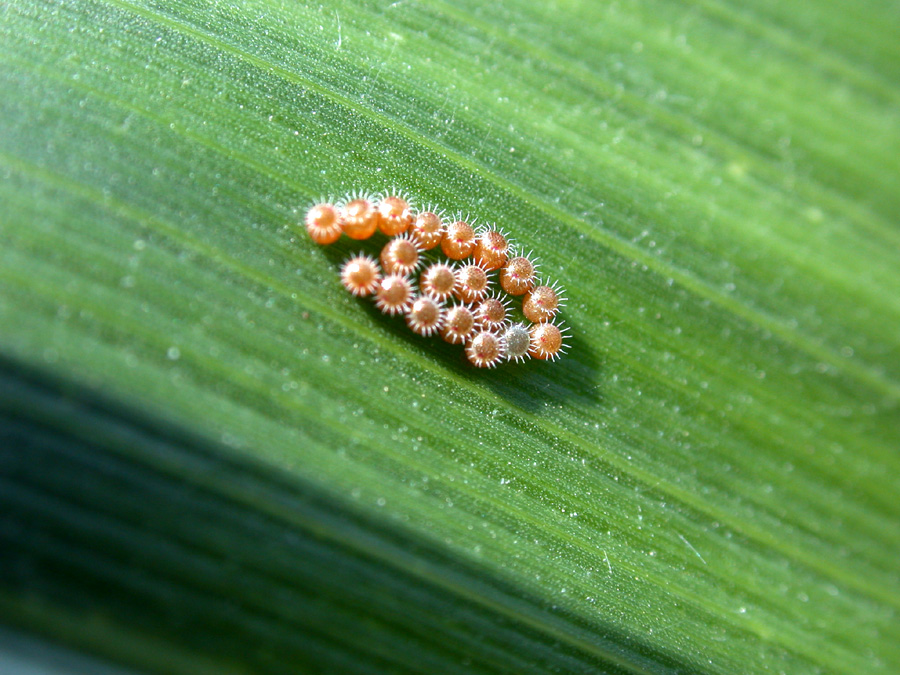
Photo by B. Christine
Nymphs are similar in appearance to the adults; however, they are smaller and do not have fully developed wings. As the nymphs develop, wing pads become evident.
The one-spotted stink bug overwinters in the adult stage in wooded areas, grass bordering cultivated crops, cover crops, and/or in small grain fields. There is one generation per year. Movement to corn most often occurs when small grains mature or when cover crops or weeds are treated with herbicides or removed for corn planting.
Damage

Photo by Purdue University
Stink bugs feed by sticking their straw-like mouth parts into the plant tissue and suck the plant juices. They inject an enzyme into the plant which helps digest the plant tissue. Plant tissue at or near the feeding site will show some form of injury. Damage could appear as partial destruction of the plant tissue, plant deformity (irregular twisting or growth of the stalk), or holes in the leaves. Plant damage is most evident after approximately plant growth stage V5. Holes can vary somewhat in size, getting larger as the leaf expands. They are often ringed with plant tissue that has turned yellow, with the edge of the hole generally transparent. The holes are similar to those caused by billbugs: however, leaf tissue has not been removed by chewing on the leaf.
Other above ground symptoms often observed include suckering (tillering) and other forms of growth deformity. In some cases, the plants may split open, leaving a ragged brown slit in the side of the stalk. A jelly-like substance produced by the plant may be evident in the damaged area. Plant dissections often reveal that the growing point has been injured or killed. Damage is most serious in small plants.
Late whorl stage plants are fed on below the leaf through the leaf sheath. This feeding has been reported to sometimes cause injury to the leaf sheath and developing ear behind the sheath. Feeding damage to late whorl stage plants includes abortion of kernels at the feeding site, curving of the ear away from the stalk, and shuck discoloration. It is unlikely for economic levels of damage to occur at this plant stage in the Midwest.
Sampling Method
- Early detection is necessary if brown stink bugs are present in corn.
- 5 areas of a field, 20 consecutive plants
- From emergence to mid whorl, record the percentage of plants showing damage.
- Note the severity of the damage (e.g. plants with holes in leaves, plant deformity, slits in the stalk, and dead or dying plants).
- Determine if the bugs are still present. Note if they are at ground level, on stalks, or in whorls.
- From late whorl through silking, record the percentage of plants showing stink bug feeding damage, either on leaf, ear sheaths, or developing ears, and note the level of infestation.
Management Guidelines
Corn Insect Control Recommendations:
- Where planting is delayed, especially when no-tilling into heavy plant residues, stink bugs can be a problem and there is very little time to observe stink bug feeding before a control is needed. Spiking corn plants are most vulnerable to attack and damage, especially when seed slots are not closed properly at planting (i.e., soil too wet).
- Necessary precautions for managing this pest must be adopted prior to crop emergence. Regular field scouting before planting or crop emergence is recommended. If stink bugs are noted and a burn down herbicide will be used to kill the vegetation within a field prior to planting, the use of an herbicide-insecticide tank mix may be advisable (check labels for specific recommendations and compatibility information). A field can be made less suitable for stink bugs by tilling the field, thus eliminating the plant cover that can harbor the bugs. If in no-till, closure of the seed slot is essential in order to prevent the bugs from feeding below ground on the growing point of seedlings.


Photo by J. Obermeyer
A predaceous species of stink bug, Podisus maculiventris, looks very similar to plant damaging stink bugs. However, this beneficial species can be identified by its faint smudge of dark color in the clear portion of the wing and several pairs of dark spots on the femora, or “thigh,” of the rear legs.

